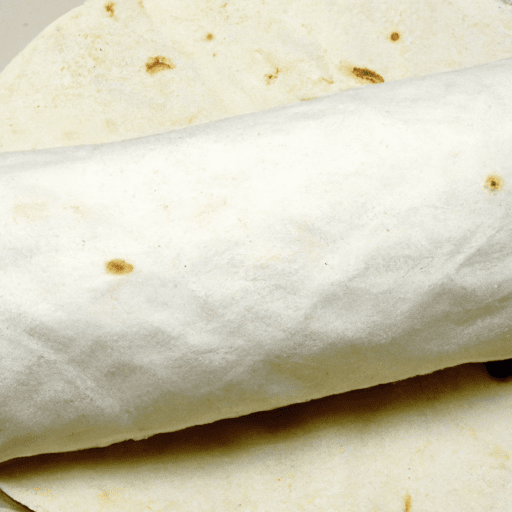Discovering the Magic of Burrito Tortillas
When it comes to versatile and delicious culinary creations, few things can match the marvel that is the burrito tortilla. This humble yet extraordinary piece of flatbread forms the foundation for one of the most beloved and satisfying dishes in Mexican cuisine. In this blog post, we will delve into the fascinating world of burrito tortillas, exploring their taste, common uses in cooking, nutritional value, and uncovering some interesting history and facts.
Unraveling the Taste Sensation
At first glance, a burrito tortilla may seem like a simple flour-based wrap. However, it is so much more. These soft and pliable discs of dough offer a subtle, slightly nutty flavor that perfectly complements the savory fillings they encase. The texture is equally important, as the tortilla should strike a balance between being sturdy enough to hold its fillings yet soft enough to fold without tearing. When cooked to perfection, it can add a delightful touch to any burrito creation.
Versatility in the Kitchen
While burrito tortillas are an integral part of the beloved burrito, their potential extends far beyond this classic dish. The beauty of these versatile wraps lies in their ability to adapt to almost any culinary creation. From fajitas and tacos to enchiladas and quesadillas, burrito tortillas serve as an ideal vessel for all kinds of flavorful fillings. Their neutral taste allows them to pair well with a variety of ingredients, making them a blank canvas limited only by your imagination.
Nutritional Value
In addition to their taste and versatility, burrito tortillas also provide some nutritional benefits. Traditional flour-based tortillas are an excellent source of carbohydrates, which are essential for energy. They also contain small amounts of protein and fiber. When selecting tortillas, keep in mind that whole wheat or whole grain varieties offer additional nutritional value compared to those made solely with refined flour. Remember to moderate your portion sizes and balance your fillings to create a well-rounded meal.
A Brief Historical Journey
The origins of tortillas date back thousands of years to the indigenous tribes of Mesoamerica, where corn was a staple crop. However, the tortillas we know and love today bear the influence of Spanish colonizers who introduced wheat to the region. This fusion of ingredients resulted in the birth of flour tortillas, which quickly gained popularity within Mexican cuisine. Burrito tortillas, specifically, have a more recent history, believed to have originated in the state of Chihuahua, Mexico, before spreading across the border to the United States.
Fascinating Facts and Tips
Here are a few interesting tidbits about burrito tortillas to pique your curiosity:
Size matters: Burrito tortillas tend to be larger than other types of tortillas to accommodate a generous filling. Their larger size makes them perfect for holding an assortment of delicious ingredients.
Heat it up: For the best flavor and texture, consider heating your tortilla before assembling your burrito. This quick step ensures a soft and pliable wrap that won’t crack or tear when folded.
Beyond savory: While burrito tortillas are commonly associated with savory dishes, they can also be used in sweet creations. Try spreading them with a light layer of Nutella or peanut butter, then roll them up and enjoy as a delightful dessert treat.
Now armed with a deeper understanding of burrito tortillas, you can fully appreciate the magic they bring to the world of cooking. Whether you’re savoring a classic burrito, experimenting with new fillings, or exploring the rich history behind this culinary treasure, the burrito tortilla is a food lover’s delight that continues to captivate taste buds around the globe. So go ahead, embark on your own burrito adventure, and savor the wonders of this remarkable creation!
Burrito Tortilla
Here are some interesting facts about burrito tortillas:
Origin: The burrito tortilla originated in Northern Mexico, likely in the state of Chihuahua. It is believed to have been created during the Mexican Revolution as a portable and convenient way to carry and eat food.
Common Uses: Burrito tortillas are versatile and can be used to make various dishes. The most popular use is in burritos, where a tortilla is filled with ingredients such as beans, meat, rice, and vegetables. They are also used to make wraps, quesadillas, and enchiladas.
Ingredients: Traditional burrito tortillas are made using simple ingredients like flour, water, salt, and fat. Fat can be added in the form of lard, vegetable shortening, or oil. Some variations also include baking powder.
Nutritional Benefits: Burrito tortillas can provide a source of carbohydrates, fiber, and some proteins. The nutritional benefits vary depending on the specific ingredients used and the filling added.
Unique Properties: Burrito tortillas are typically larger and thinner than other tortillas, allowing them to be folded and wrapped easily. They are often made using white flour, but whole wheat and corn tortillas are also used.
Historical Significance: The burrito tortilla played a significant role in Mexican cuisine. It is considered a staple food and has gained popularity worldwide. Over time, it has also evolved to suit different tastes and preferences, leading to a wide variety of fillings and flavors.
Remember that burrito tortillas can have different variations and adaptations, both regionally and culturally. The facts above represent a general understanding of burrito tortillas.




Use the share button below if you liked it.
It makes me smile, when I see it.